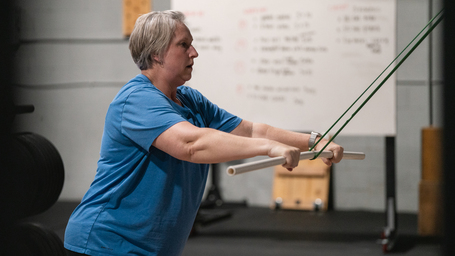
As we journey through life, our bodies undergo numerous changes. One of the most significant transformations occurs as we age, presenting unique challenges and opportunities. While some may view aging as a period of decline, it can also be a time of growth, resilience, and renewed vitality. Key to unlocking this potential lies in prioritizing two crucial elements of fitness: strength and flexibility.
For those aged 50 and beyond, maintaining physical health becomes increasingly important. As the years pass, we naturally lose muscle mass and flexibility, leading to a decline in overall function and mobility. However, with targeted efforts and a commitment to regular exercise, it’s possible to mitigate these effects and enjoy a vibrant, active lifestyle well into our later years.
Let’s first delve into the importance of strength training. Often overlooked or misunderstood, strength training offers a multitude of benefits for older adults. Contrary to popular belief, it’s not about bulking up or lifting heavy weights; rather, it’s about preserving and enhancing muscle mass, which is critical for maintaining balance, stability, and independence.
As we age, we become more susceptible to conditions such as osteoporosis and sarcopenia, which weaken bones and muscles, respectively. Strength training serves as a powerful antidote to these age-related changes by stimulating muscle growth, improving bone density, and enhancing overall strength. Not only does this reduce the risk of falls and fractures, but it also promotes better posture, coordination, and functional ability in daily activities.
Moreover, strength training offers numerous benefits beyond the physical realm. Research has shown that it can boost mood, cognition, and overall well-being, helping to combat the mental and emotional challenges that often accompany aging. By embracing strength training as a cornerstone of your fitness routine, you’re not just investing in your physical health but also nurturing your mental and emotional resilience.
So, how can you incorporate strength training into your life? The good news is that it doesn’t require fancy equipment or hours spent at the gym. Simple bodyweight exercises, such as squats, lunges, push-ups, and planks, can be done in the comfort of your own home with minimal equipment. Additionally, resistance bands, dumbbells, or even household items like water bottles or soup cans can add extra challenge to your workouts.
Consistency is key when it comes to strength training. Aim for at least two to three sessions per week, focusing on all major muscle groups. Start with light weights or resistance and gradually increase as you become stronger and more confident. Remember to listen to your body and consult with a certified fitness professional if you have any underlying health concerns or limitations.
In addition to strength training, maintaining flexibility is equally essential for overall health and well-being. Flexibility refers to the ability of your muscles and joints to move through their full range of motion, which is crucial for preventing injury, reducing stiffness, and preserving mobility as you age.
Unfortunately, flexibility tends to decline with age due to factors such as decreased activity levels, prolonged sitting, and loss of elasticity in connective tissues. However, with regular stretching and mobility exercises, you can counteract these effects and improve your flexibility over time.
Incorporating stretching into your daily routine is a simple yet effective way to enhance flexibility. Focus on targeting major muscle groups, such as hamstrings, quadriceps, calves, shoulders, and back, with dynamic stretches, static stretches, and gentle mobility exercises. Yoga, tai chi, and Pilates are also excellent options for improving flexibility, balance, and body awareness.
When stretching, remember to breathe deeply and never force your body into painful or uncomfortable positions. Instead, ease into each stretch gradually, holding for 15-30 seconds and repeating 2-3 times on each side. Be patient and consistent, and you’ll soon notice improvements in your flexibility and range of motion.
As you embark on your journey to greater strength and flexibility, remember that you don’t have to go it alone. Seeking guidance from a certified fitness coach or personal trainer can provide invaluable support and expertise tailored to your individual needs and goals. Whether you’re new to exercise or a seasoned fitness enthusiast, personalized coaching can help you optimize your workouts, stay motivated, and achieve lasting results.
At Xtra Mile Fitness, we’re committed to helping individuals aged 50 and beyond unlock their full potential and live their healthiest, happiest lives. That’s why we’re offering a free consultation with one of our certified coaches to help you kickstart your fitness journey and discover the transformative power of strength and flexibility training. Don’t let age be a barrier to vitality—take the first step towards a stronger, more flexible you today. Schedule your free consultation now and embark on a path to lifelong health and well-being.
